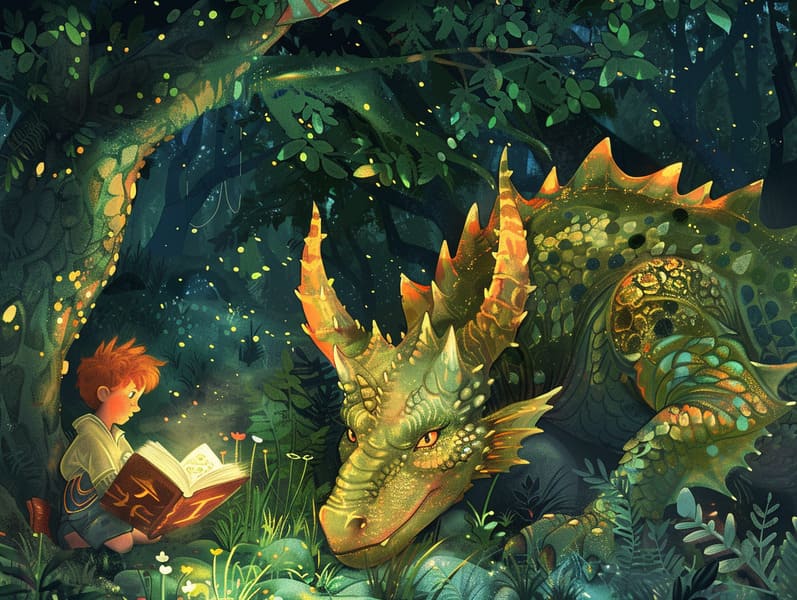The Journey of Mythical Fairy Tales with Its Everlasting Grace.

Best fairy tales have old origins. These narratives have been shared from one generation to the next long before they were ever documented. They arose from a variety of cultures, including European traditions. They were initially transmitted among mature audiences, often carrying themes and messages reflective of the societal norms and beliefs of the time.
The famous Grimm duo, the two Grimm brothers, were among the first to gather many of these beloved stories. Their collection, "Grimm's Story Collection," included narratives like "Cinderella," "Hansel and Grethel," and "Schneewittchen," which have since become classics in the world of famous fairy tales. Similarly, Hans Christian Andersen's whimsical stories, such as "The Story of the Little Mermaid," and "The Duckling's Story," have captured hearts worldwide, establishing their place in the pantheon of treasured fairy tales.
Though they are centuries old, traditional fairy tales remain as applicable as ever, especially as children's night stories. These delightful tales are now available in different formats, including richly illustrated books, delightful animations, and online storybooks.
Their lasting appeal can be ascribed to several magical reasons:
Moral Lessons: Ancient fairy tales often whisper important moral lessons. Narratives like "The Tale of the Boy Who Cried Wolf" teach the value of being truthful, while "The Hare and the Tortoise" exemplify the traits of resolve and unassuming nature. These narratives offer kids clear distinctions between truth and falsehood, guiding their moral compass in a soft yet deep way.
Sympathy and Perception: Fairy tales frequently depict beings facing difficulties and adversities, provoking young readers to resonate with their struggles and support their triumphs. For instance, "The Tale of Beauty and the Beast" demonstrates the benefit of looking beyond appearances to comprehend the true essence of a person, fostering understanding and understanding.
Cultural Awareness: Many fairy tales are saturated in the cultural contexts from which they emerged. Learning from these fairy tales can provide enlightening views into different backgrounds, advancing a sense of cultural appreciation and discernment.
Inventiveness and Fantasy: The imaginative elements in old fairy tales—magical spells—provoke children’s fantastical thinking. These fairy tales carry readers to fantastical realms, engendering innovative thinking and a sense of astonishment that continues a lifetime.
Old fairy tales are not only delightful but also pedagogical. They function as whimsical tools in strengthening various cognitive and affective skills in the young. When old fairy tales are told out loud, they cultivate speech development by offering new phrases and elaborate sentence structures. This practice also improves hearing perception and concentration, as little ones concentrate deeply, excited to see what happens next.
Furthermore, discussing the themes and characters of ancient fairy tales can improve logical thinking and intellectual skills. Young ones are taught to find patterns, anticipate outcomes, and comprehend cause and effect. These deliberations also boost young readers utter their thoughts and feelings, adding to their emotional intelligence.
In today’s technological era, the accessibility of digital storybooks has made these narratives more within reach than ever. Internet resources and software offer vast collections of famous fairy tales that can be accessed or listened on anytime, anywhere. Fairy tales voiced are particularly common, giving an interactive way for kids to immerse in these enchanting tales. Sound books and read-out-loud stories guide characters and settings to life, often supported by captivating sound effects and music that intensify the story adventure.
The lasting allure of old fairy tales lies in their ability to alter to modern days while maintaining their fundamental ideas. Contemporary modernizations of these tales often highlight more diverse figures and modern settings, making them relevant to today’s audience. However, the core values of daring, empathy, and justness remain unchanged, continuing to connect with children of all ages.
Ancient fairy tales also offer a sense of reassurance and predictability. They feature a well-structured narrative with a clear beginning, middle, and end, often winding up with the wrap-up of conflicts and the triumph of good over evil. This foreseeability can be placating for little ones, providing a sense of steadiness in here an constantly changing world.
Traditional fairy tales continue to mesmerize and guide new generations, maintaining their elegance and significance in modern society. As nighttime stories for kids, they put forth a perfect blend of delight and instruction, advancing moral values, empathy, and creativity. The abundance of web-based fairy tales and the in demand status of fairy tales narrated certify that these classic tales remain available to new generations.
By safeguarding and spreading these narratives, we continue to appreciate the rich tapestry of cultural legacy and cultural heritage. Whether you are perusing a artistically illustrated book, exploring a virtual collection, or playing an voice book, the captivation of famous fairy tales is always within reach. These stories show us of the endless effect of tales and its ability to hold us together across generations and cultures.
Be it you are accessing a richly illustrated book, delving into a digital collection, or playing an spoken story, the elegance of popular fairy tales is always within reach.
These fairy tales reveal of the continued power of storytelling and its ability to hold us together across time and space, forging a link that captivates and teaches alike.